Search the Blog
Categories
- Books & Reading
- Broadband Buzz
- Census
- Education & Training
- General
- Grants
- Information Resources
- Library Management
- Nebraska Center for the Book
- Nebraska Libraries on the Web
- Nebraska Memories
- Now hiring @ your library
- Preservation
- Pretty Sweet Tech
- Programming
- Public Library Boards of Trustees
- Public Relations
- Talking Book & Braille Service (TBBS)
- Technology
- Uncategorized
- What's Up Doc / Govdocs
- Youth Services
Archives
Subscribe
Category Archives: What’s Up Doc / Govdocs
2020 Census Preparation Manual
The 2020 Census will be conducted primarily online, creating additional obstacles to counting already under-counted populations. With this in mind, communities and organizations are preparing to support enumeration efforts by providing safe internet access points, answering questions from the community, and tracking incidents that arise.
The Digital Equity Laboratory has released a learning guide, Preparing for the First Digital Census, meant for anyone who intends to work with communities towards a complete count during Census 2020. Based on expert risk assessments and a series of pilot workshops across New York State, they have compiled a set of curriculum modules intended to equip organizations with the information and tools they need to play their part.
The goal is to provide both digital and public-facing tactics and techniques to reduce confusion, find the right path to participation for all, help prevent possible harms, and enable communities to better prepare against the uncertainties of a digital census. The aim has been to address holistic safety concerns, not solely cybersecurity.
Complete manual: “Preparing for the First Digital Census”
Free Class: Libraries as Partners in Healthy Communities

WebJunction is collaborating with the National Network of Libraries of Medicine (NNLM) to design a series of courses for public library staff related to health topics. The next course, available in March through WebJunction, is Libraries as Partners in Healthy Communities.

Public libraries around the country are magnifying the role they play as key contributors to community health. By understanding the health needs and challenges specific to our communities, libraries are able to respond with relevant services and programming, often created in collaboration with local agencies and health providers.
Join us this March for Libraries as Partners in Healthy Communities, a free, two-week, instructor-led course, to explore how your library can actively partner to promote the health of your community through responsive programs and services, and learn how to incorporate this focus into your library’s strategic plan.
The course will look at the many ways public libraries are supporting community health, and provide strategies and methods to identify activities that serve the health needs of your community. We will also look for inspiration and support from partnerships, including a library that partnered with the local Parks and Recreation department to host an all-ages Zumba program, and another that worked with the local health department to host a chronic disease self-management workshop for community members without adequate access to traditional healthcare. And Josh Berk, of Bethlehem Area Public Library, will present about Bike Bethlehem, a free bike share program serving community needs through a successful multi-agency partnership.
WebJunction’s Dale Musselman and NNLM’s Darlene Kaskie will present this free course in two live, online sessions, on March 3 and 10, from 2:00-3:00 pm Eastern Time, with two additional hours of readings and assignments for learners to complete on their own. You’ll also be encouraged to share your ideas and learning with others enrolled in the course through active discussion forums. Learn more about the course Libraries as Partners in Healthy Communities, enroll today, and join us in March to take the next steps for your library’s community health partnerships.
UPDATES: Libraries and the 2020 Census

| New webinar recording about responding to the Census If you missed ALA’s sold-out webinar, “Responding Online to the 2020 Census: What Libraries Need to Know,” the recording is now available. The webinar orients library staff to the 2020 Census questionnaire, the online response system, other options for responding, common questions, and tips for libraries. New tip sheet on Census programs and partnerships On January 30, ALA released “Libraries and the 2020 Census: Programming, Outreach, and Partnerships (PDF),” a 2-page tip sheet that describes how libraries can reach hard-to-count populations and build community collaborations around the 2020 Census. Updated “Libraries’ Guide to the 2020 Census” On January 22, ALA released an updated “Libraries’ Guide to the 2020 Census.” The revised 22-page guide (PDF) includes the latest information about Census operations and tips for libraries. Share it with a colleague who needs to know! Upcoming events February 13, 2 pm ET: YALSA webinar: “Engaging Teens in the 2020 Census” (free for YALSA members, paid for others) February 18, noon ET: ODLOS webinar: “Census 2020 Outreach to Communities of Color” February 28: PLA Conference: “2020 Census Countdown: What You Need to Know Now” (3:30 pm CT, Music City Center, room 103) News of note The Scoop: “Completing the Count” (January 26, 2020) – report of ALA Midwinter program UPI: “Census Bureau aims to improve response rates” (January 23, 2020) – includes a discussion of libraries’ activities School Library Journal: “Libraries Are Preparing for the 2020 Census. With Plenty at Stake, There’s Still Work To Be Done” (January 21, 2020) The Public Libraries Podcast: “The 2020 Census and Public Libraries” (January 21, 2020) |
A History of the Census in the United States : Part 17
The Seventeenth Census: Census Day was April 1, 1950.

Enumeration
The 1950 census encompassed the continental United States, the territories of Alaska and Hawaii, American Samoa, the Canal Zone, Guam, Puerto Rico, the Virgin Islands of the United States, and some of the smaller island territories.
Americans abroad were enumerated for the first time in 1950. Provisions were made to count members of the armed forces, crews of vessels, and employees of the United States government living in foreign countries, along with any members of their families also abroad. This enumeration was carried out through cooperative arrangements with the departments of Defense and State, the United States Maritime Administration and other federal agencies that took responsibility for distributing and collecting specially designed questionnaires.
Other persons living abroad were to be reported by their families or neighbors in the United States, but the quality of these data was considered to be poor and they were not included in the published statistics.
A new survey on residential financing was conducted as part of the 1950 census. In a separate operation, information was collected on a sample basis from owners of owner-occupied and rental properties and mortgage lenders.
Efforts to Improve Coverage and Completeness
Several procedures were used to improve the accuracy and completeness of the 1950 census, including: improved enumerator training, providing enumerators with detailed street maps of their assigned areas, publishing “Missed Person” forms in local newspapers, and setting a specific night to conduct a special enumeration of persons in hotels, tourist courts, and other places frequented by transients.
For the first time, a post-enumeration survey was instituted as a further check on the accuracy and completeness of the count. The Census Bureau recanvassed a sample of about 3,500 small areas and compared these to the original census listings to identify households that may have been omitted in the original enumeration. In addition, a sample of about 22,000 households was reinterviewed to determine the number of persons likely omitted in the initial count.
Technological Advancement
The Census Bureau began use of the first non-military computer shortly after completing the 1950 enumeration. UNIVAC I (for Universal Automatic Computer), the first of a series, was delivered in 1951, and helped tabulate some of the statistics for the 1954 economic censuses. It weighed 16,000 pounds and used 5,000 vacuum tubes.
Intercensal Activity
In August of 1954, Congress codified the various statutes, including 1929’s Fifteenth Census Act, which authorized the decennial and other censuses, as Title 13, US Code. Since then, Title 13 (along with other laws) has been the underlying authority that governs the actions of the Bureau.
Further Information
- A detailed procedural history of the 1950 census is available in The 1950 Censuses – How They Were Taken [ZIP 37.3MB]
- A wide variety of historical statistics from this and other decades is available in Historical Statistics of the United States: Colonial Times to 1970. It is available as a PDF [74.4MB] or 2-part ZIP file: Part I [52.2MB] | Part II [66.1MB].
- Reports and statistics from the 1950 census
Information provided from Census.gov
Posted in Books & Reading, Census, Education & Training, General, Information Resources, What's Up Doc / Govdocs
Tagged census
Leave a comment
A History of the Census in the United States : Part 16
The Sixteenth Census: Census Day was April 1, 1940.
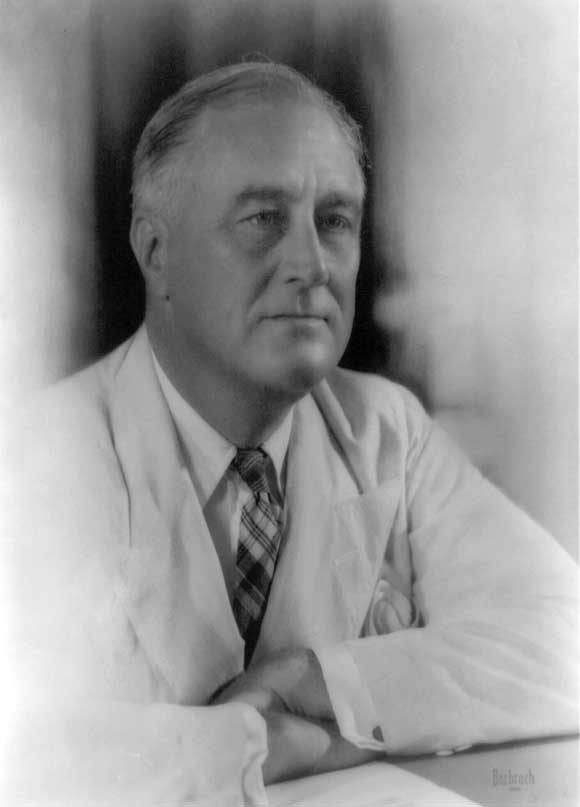
Authorizing Legislation
In August 1939, Congress authorized the director of the census to conduct a national census of housing “in each state, the District of Columbia, Hawaii, Puerto Rico, the Virgin Islands, and Alaska, in the year 1940 in conjunction with, and at the same time, and as part of the population inquiry of the sixteenth decennial census.” The census was “to provide information concerning the number, characteristics (including utilities and equipment), and geographic distribution of dwelling structures and dwelling units in the United States.”
Enumeration
Because the originating legislation came so late in the census planning process and because the nature of the questions was so different from those in the census of population, the housing inquiries in the 1940 census were collected via a separate census. In practice, enumerators collected information for the housing census at the same time they collected information for the population census.
Sampling
One of the major innovations of the 1940 census was the use of advanced statistical techniques, including probability sampling, which had been used only on an experimental basis before. Sampling had been tested in a trial census of unemployment carried out by the Civil Works Administration in 1933-1934 and surveys of retail stores in the same decade, and an official sample survey of unemployment in 1937 that covered about 20,000 households.
Sampling in the 1940 census allowed the addition of a number of demographic questions of enumerated persons without unduly increasing the overall burden on respondents and on data processing. It also made it possible to publish preliminary returns 8 months ahead of the complete tabulations. Sampling also allowed the Census Bureau to increase the number of detailed tables published and review the quality of the data processing with more efficiency.
Several new questions reflected the concerns of the depression years. Along with the new census focusing on the condition of the nation’s housing stock and the need for public housing programs, the 1940 census included questions about employment, unemployment, internal migration and income.
Further Information
- Procedural History of the 1940 Census of Population and Housing [PDF 13.4MB], prepared by Robert Jenkins, The Center for Demography and Ecology, University of Wisconsin, Madison, WI, 1983.
- A wide variety of historical statistics from this and other decades is available in Historical Statistics of the United States: Colonial Times to 1970. It is available as a PDF [74.4MB] or 2-part ZIP file: Part I [52.2MB] | Part II [66.1MB].
- Reports and statistics from the 1940 census
Information provided from Census.gov
Posted in Books & Reading, Census, Education & Training, General, Information Resources, What's Up Doc / Govdocs
Tagged census
Leave a comment
Book Briefs: New University of Nebraska Press Books at the Nebraska Publications Clearinghouse

The Nebraska Publications Clearinghouse receives documents every month from all Nebraska state agencies, including the University of Nebraska Press (UNP). Each month we will be showcasing the UNP books that the Clearinghouse receives. UNP books, as well as all Nebraska state documents, are available for checkout by libraries and librarians, for their patrons, in Nebraska.
Here are the UNP books the Clearinghouse received in January 2020:
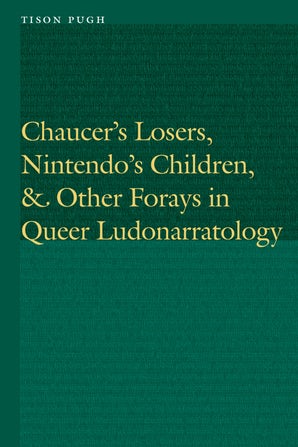
Chaucer’s losers, Nintento’s Children, and Other Forays in Queer Ludonarratology Tison Pugh (Series: Frontiers of Narrative)
Tison Pugh examines the intersection of narratology, ludology, and queer studies, pointing to the ways in which the blurred boundaries between game and narrative provide both a textual and a metatextual space of queer narrative potential. By focusing on these three distinct yet complementary areas, Pugh shifts understandings of the way their play, pleasure, and narrative potential are interlinked.
Through illustrative readings of an eclectic collection of cultural artifacts—from Chaucer’s Canterbury Tales to Nintendo’s Legend of Zelda franchise, from Edward Albee’s dramatic masterpiece Who’s Afraid of Virginia Woolf? to J. K. Rowling’s Harry Potter fantasy novels—Pugh offers perspectives of blissful ludonarratology, sadomasochistic ludonarratology, the queerness of rules, the queerness of godgames, and the queerness of children’s questing video games. Collectively, these analyses present a range of interpretive strategies for uncovering the disruptive potential of gaming texts and textual games while demonstrating the wide applicability of queer ludonarratology throughout the humanities.

Inside the Hot Zone : A Soldier on the Front Lines of Biological Warfare Mark G. Kortepeter
Inside the Hot Zone is an insider’s account of one of the most dangerous workplaces on earth: the United States Army Medical Research Institute of Infectious Diseases (USAMRIID) in Fort Detrick, Maryland. Retired U.S. Army Col. Mark G. Kortepeter, a leading biodefense expert, recounts his journey from the lecture hall to the role of department chief, to the battlefield, to the Biosafety Level-4 maximum containment lab, and finally, to the corner office.
During Kortepeter’s seven and a half years in leadership at USAMRIID, the United States experienced some of the most serious threats in modern germ warfare, including the specter of biological weapons during the Iraq War, the anthrax letters sent after 9/11, and a little-known crisis involving a presumed botulism attack on the president of the United States. Inside the Hot Zone is a shocking, frightening eye-opener as Kortepeter describes in gripping detail how he and his USAMRIID colleagues navigated threats related to anthrax, botulism, smallpox, Lassa, and Ebola.
Kortepeter crafts a rich and riveting narrative as he wrestles with life-and-death decisions managing biological weapon exposures. The stories are real, but they could just as easily serve as plotlines in popular fiction or Hollywood thrillers. He gives the reader a seat at the table as each crisis unfolds, with an unvarnished and personal perspective on the dangers, the drama, the fear, the frustrations, the irony, and the uncertainty he encountered as a physician in the role of “Biodefender.”

National Pastimes : Cinema, Sports, and Nation Katharina Bonzel (Series: Sports, Media, and Society)
Sports have long fascinated filmmakers from Hollywood and beyond, from Bend It Like Beckham to Chariots of Fire to Rocky. Though sports films are diverse in their approach, style, and storytelling modes, National Pastimes discloses the common emotional and visual cues that belie each sports film’s underlying nationalistic impulses. Katharina Bonzel unravels the delicate matrix of national identity, sports, and emotion through the lens of popular sports films in comparative national contexts, demonstrating in the process how popular culture provides a powerful vehicle for the development and maintenance of identities of place across a range of national cinemas.
As films reflect the ways in which myths of nation and national belonging change over time, they are implicated in important historical moments, from Cold War America to the class dynamics of 1980s Thatcherite Britain to the fragmented sense of nation in post-unification Germany. Bonzel shows how sports films provide a means for renegotiating the boundaries of national identity in an accessible, engaging form. National Pastimes opens up new ways of understanding how films appeal to the emotions, using myth-like constructions of the past to cultivate spectators’ engagement with historical events.

Shape Shifters : Journeys Across Terrains of Race and Identity Edited by Lily Anne Y. Welty Tamai, Ingrid Dineen-Wimberly, and Paul Spickard (Series: Borderlands and Transcultural Studies)
Shape Shifters presents a wide-ranging array of essays that examine peoples of mixed racial identity. Moving beyond the static “either/or” categories of racial identification found within typical insular conversations about mixed-race peoples, Shape Shifters explores these mixed-race identities as fluid, ambiguous, contingent, multiple, and malleable. This volume expands our understandings of how individuals and ethnic groups identify themselves within their own sociohistorical contexts.
The essays in Shape Shifters explore different historical eras and reach across the globe, from the Roman and Chinese borderlands of classical antiquity to medieval Eurasian shape shifters, the Native peoples of the missions of Spanish California, and racial shape shifting among African Americans in the post–civil rights era. At different times in their lives or over generations in their families, racial shape shifters have moved from one social context to another. And as new social contexts were imposed on them, identities have even changed from one group to another. This is not racial, ethnic, or religious imposture. It is simply the way that people’s lives unfold in fluid sociohistorical circumstances.
With contributions by Ryan Abrecht, George J. Sánchez, Laura Moore, and Margaret Hunter, among others, Shape Shifters explores the forces of migration, borderlands, trade, warfare, occupation, colonial imposition, and the creation and dissolution of states and empires to highlight the historically contingent basis of identification among mixed-race peoples across time and space.

Willa Cather and the Arts Edited by Guy J. Renolds (Series: Cather Studies, Vol. 12)
Over the five decades of her writing career Willa Cather responded to, and entered into dialogue with, shifts in the terrain of American life. These cultural encounters informed her work as much as the historical past in which much of her writing is based. Cather was a multifaceted cultural critic, immersing herself in the arts, broadly defined: theater and opera, art, narrative, craft production. Willa Cather and the Arts shows that Cather repeatedly engaged with multiple forms of art, and that even when writing about the past she was often addressing contemporary questions.
The essays in this volume are informed by new modes of contextualization, including the increasingly popular view of Cather as a pivotal or transitional figure working between and across very different cultural periods and by the recent publication of Cather’s correspondence. The collection begins by exploring the ways Cather encountered and represented high and low cultures, including Cather’s use of “racialized vernacular” in Sapphira and the Slave Girl. The next set of essays demonstrates how historical research, often focusing on local features in Cather’s fiction, contributes to our understanding of American culture, from musicological sources to the cultural development of Pittsburgh. The final trio of essays highlights current Cather scholarship, including a food studies approach to O Pioneers! and an examination of Cather’s use of ancient philosophy in The Professor’s House. Together the essays reassess Cather’s lifelong encounter with, and interpretation and reimagining of, the arts.
**All synopses courtesy of University of Nebraska Press (https://www.nebraskapress.unl.edu/)
A History of the Census in the United States : Part 15
The Fifteenth Census: Census Day was April 1, 1930.
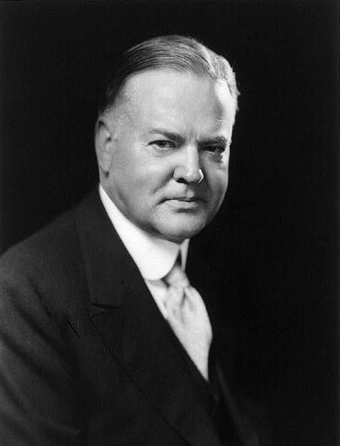
Authorizing Legislation
The Fifteenth Census Act, approved June 18, 1929, authorized “a census of population, agriculture, irrigation, drainage, distribution, unemployment, and mines [to be] taken by the Director of the Census.” This act was the first to specify only general areas to be investigated, leaving the content of specific questions to the discretion of the director. The census encompassed each state, along with Washington, DC, Alaska, Hawaii, and Puerto Rico. The governors of Guam, American Samoa, and the Virgin Islands each completed a census that same year. So did the governor of the Panama Canal Zone.
Crises and Controversies
In the time between the passage of the act and census day, the stock market crashed and the nation plunged into the Great Depression. The public and academics wanted quick access to the unemployment information collected in the 1930 census. The Census Bureau had not planned to process the unemployment information it had collected – which some statisticians considered unreliable – until quite a bit later and was unequipped to meet these demands. When it did rush its data on unemployment out, the numbers it reported were attacked as being too low. Congress required a special unemployment census for January 1931; the data it produced confirmed the severity of the situation.
Intercensal Activity
Congress mandated that another unemployment census be conducted in 1937. This special census was largely voluntary; postal carriers delivered a form to every residential address in the country and those who were unemployed were expected to fill it out and mail it back. This special census is noteworthy because it was an early opportunity for Census Bureau statisticians to experiment with statistical sampling. Two percent of households were delivered a special census questionnaire whose results were used to test the accuracy of the larger census.
Further Information
- A wide variety of historical statistics from this and other decades is available in Historical Statistics of the United States: Colonial Times to 1970. It is available as a PDF [74.4MB] or 2-part ZIP file: Part I [52.2MB] | Part II [66.1MB].
- Reports and statistics from the 1930 Census
Information provided from Census.gov
Posted in Books & Reading, Census, Education & Training, General, Information Resources, What's Up Doc / Govdocs
Tagged census
Leave a comment
Book Briefs: New University of Nebraska Press Books at the Nebraska Publications Clearinghouse
 The Nebraska Publications Clearinghouse receives documents every month from all Nebraska state agencies, including the University of Nebraska Press (UNP). Each month we will be showcasing the UNP books that the Clearinghouse receives. UNP books, as well as all Nebraska state documents, are available for checkout by libraries and librarians, for their patrons, in Nebraska.
The Nebraska Publications Clearinghouse receives documents every month from all Nebraska state agencies, including the University of Nebraska Press (UNP). Each month we will be showcasing the UNP books that the Clearinghouse receives. UNP books, as well as all Nebraska state documents, are available for checkout by libraries and librarians, for their patrons, in Nebraska.
Here are the UNP books the Clearinghouse received in November and December 2019:
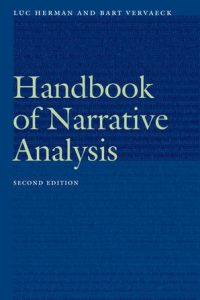 Handbook of Narrative Analysis Luc Herman and Bart Vervaeck (Series: Frontiers of Narrative)
Handbook of Narrative Analysis Luc Herman and Bart Vervaeck (Series: Frontiers of Narrative)
Stories are everywhere, from fiction across media to politics and personal identity. Handbook of Narrative Analysis sorts out both traditional and recent narrative theories, providing the necessary skills to interpret any story. In addition to discussing classical theorists, such as Gérard Genette, Mieke Bal, and Seymour Chatman, Handbook of Narrative Analysis presents precursors (such as E. M. Forster), related theorists (Franz Stanzel, Dorrit Cohn), and a large variety of postclassical critics. Among the latter particular attention is paid to rhetorical, cognitive, and cultural approaches; intermediality; storyworlds; gender theory; and natural and unnatural narratology.
Not content to consider theory as an end in itself, Luc Herman and Bart Vervaeck use two short stories and a graphic narrative by contemporary authors as touchstones to illustrate each approach to narrative. In doing so they illuminate the practical implications of theoretical preferences and the ideological leanings underlying them. Marginal glosses guide the reader through discussions of theoretical issues, and an extensive bibliography points readers to the most current publications in the field. Written in an accessible style, this handbook combines a comprehensive treatment of its subject with a user-friendly format appropriate for specialists and nonspecialists alike.
Handbook of Narrative Analysis is the go-to book for understanding and interpreting narrative. This new edition revises and extends the first edition to describe and apply the last fifteen years of cutting-edge scholarship in the field of narrative theory.
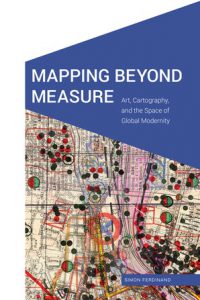 Mapping Beyond Measure : Art, Cartography, and the Space of Global Modernity Simon Ferdinand (Series: Cultural Geographies + Rewriting the Earth)
Mapping Beyond Measure : Art, Cartography, and the Space of Global Modernity Simon Ferdinand (Series: Cultural Geographies + Rewriting the Earth)
Over the last century a growing number of visual artists have been captivated by the entwinements of beauty and power, truth and artifice, and the fantasy and functionality they perceive in geographical mapmaking. This field of “map art” has moved into increasing prominence in recent years yet critical writing on the topic has been largely confined to general overviews of the field.
In Mapping Beyond Measure Simon Ferdinand analyzes diverse map-based works of painting, collage, film, walking performance, and digital drawing made in Britain, Japan, the Netherlands, Ukraine, the United States, and the former Soviet Union, arguing that together they challenge the dominant modern view of the world as a measurable and malleable geometrical space. This challenge has strong political ramifications, for it is on the basis of modernity’s geometrical worldview that states have legislated over social space; that capital has coordinated global markets and exploited distant environments; and that powerful cartographic institutions have claimed exclusive authority in mapmaking.
Mapping Beyond Measure breaks fresh ground in undertaking a series of close readings of significant map artworks in sustained dialogue with spatial theorists, including Peter Sloterdijk, Zygmunt Bauman, and Michel de Certeau. In so doing Ferdinand reveals how map art calls into question some of the central myths and narratives of rupture through which modern space has traditionally been imagined and establishes map art’s distinct value amid broader contemporary shifts toward digital mapping.
 The Mysterious Sofia : One Woman’s Mission to Save Catholicism in Twentieth-Century Mexico Stephen J.C. Andes (Series: The Mexican Experience)
The Mysterious Sofia : One Woman’s Mission to Save Catholicism in Twentieth-Century Mexico Stephen J.C. Andes (Series: The Mexican Experience)
Who was the “Mysterious Sofía,” whose letter in November 1934 was sent from Washington DC to Mexico City and intercepted by the Mexican Secret Service? In The Mysterious Sofía Stephen J. C. Andes uses the remarkable story of Sofía del Valle to tell the history of Catholicism’s global shift from north to south and the importance of women to Catholic survival and change over the course of the twentieth century. As a devout Catholic single woman, neither nun nor mother, del Valle resisted religious persecution in an era of Mexican revolutionary upheaval, became a labor activist in a time of class conflict, founded an educational movement, toured the United States as a public lecturer, and raised money for Catholic ministries—all in an age dominated by economic depression, gender prejudice, and racial discrimination. The rise of the Global South marked a new power dynamic within the Church as Latin America moved from the margins of activism to the vanguard.
Del Valle’s life and the stories of those she met along the way illustrate the shared pious practices, gender norms, and organizational networks that linked activists across national borders. Told through the eyes of a little-known laywoman from Mexico, Andes shows how women journeyed from the pews into the heart of the modern world.
 Nomad’s Land : Pastoralism and French Environmental Policy in the Nineteenth-Century Mediterranean World Andrea E. Duffy (Series: France Overseas –Studies in Empire and Decolonization)
Nomad’s Land : Pastoralism and French Environmental Policy in the Nineteenth-Century Mediterranean World Andrea E. Duffy (Series: France Overseas –Studies in Empire and Decolonization)
During the nineteenth century, the development and codification of forest science in France were closely linked to Provence’s time-honored tradition of mobile pastoralism, which formed a major part of the economy. At the beginning of the century, pastoralism also featured prominently in the economies and social traditions of North Africa and southwestern Anatolia until French forest agents implemented ideas and practices for forest management in these areas aimed largely at regulating and marginalizing Mediterranean mobile pastoral traditions. These practices changed not only landscapes but also the social order of these three Mediterranean societies and the nature of French colonial administration.
In Nomad’s Land Andrea E. Duffy investigates the relationship between Mediterranean mobile pastoralism and nineteenth-century French forestry through case studies in Provence, French colonial Algeria, and Ottoman Anatolia. By restricting the use of shared spaces, foresters helped bring the populations of Provence and Algeria under the control of the state, and French scientific forestry became a medium for state initiatives to sedentarize mobile pastoral groups in Anatolia. Locals responded through petitions, arson, violence, compromise, and adaptation. Duffy shows that French efforts to promote scientific forestry both internally and abroad were intimately tied to empire building and paralleled the solidification of Western narratives condemning the pastoral tradition, leading to sometimes tragic outcomes for both the environment and pastoralists.
 Pathologies of Love : Medicine and the Woman Question in Early Modern France Judy Kem (Series: Women and Gender in the Early Modern World)
Pathologies of Love : Medicine and the Woman Question in Early Modern France Judy Kem (Series: Women and Gender in the Early Modern World)
Pathologies of Love examines the role of medicine in the debate on women, known as the querelle des femmes, in early modern France. Questions concerning women’s physical makeup and its psychological and moral consequences played an integral role in the querelle. This debate on the status of women and their role in society began in the fifteenth century and continued through the sixteenth and, as many critics would say, well beyond. In querelle works early modern medicine, women’s sexual difference, literary reception, and gendered language often merge. Literary authors perpetuated medical ideas such as the notion of allegedly fatal lovesickness, and physicians published works that included disquisitions on the moral nature of women.
In Pathologies of Love, Judy Kem looks at the writings of Christine de Pizan, Jean Molinet, Symphorien Champier, Jean Lemaire de Belges, and Marguerite de Navarre, examining the role of received medical ideas in the querelle des femmes. She reconstructs how these authors interpreted the traditional courtly understanding of women’s pity or mercy on a dying lover, their understanding of contemporary debates about women’s supposed sexual insatiability and its biological effects on men’s lives and fertility, and how erotomania or erotic melancholy was understood as a fatal illness. While the two women who frame this study defended women and based much of what they wrote on personal experience, the three men appealed to male authority and tradition in their writings.
 Nebraska During the New Deal : The Federal Writers’ Project in the Cornhusker State Marilyn Irvin Holt
Nebraska During the New Deal : The Federal Writers’ Project in the Cornhusker State Marilyn Irvin Holt
As a New Deal program, the Federal Writers’ Project (FWP) aimed to put unemployed writers, teachers, and librarians to work. The contributors were to collect information, write essays, conduct interviews, and edit material with the goal of producing guidebooks in each of the then forty-eight states and U.S. territories. Project administrators hoped that these guides, known as the American Guide Series, would promote a national appreciation for America’s history, culture, and diversity and preserve democracy at a time when militarism was on the rise and parts of the world were dominated by fascism.
Marilyn Irvin Holt focuses on the Nebraska project, which was one of the most prolific branches of the national program. Best remembered for its state guide and series of folklore and pioneer pamphlets, the project also produced town guides, published a volume on African Americans in Nebraska, and created an ethnic study of Italians in Omaha. In Nebraska during the New Deal Holt examines Nebraska’s contribution to the project, both in terms of its place within the national FWP as well as its operation in comparison to other state projects.
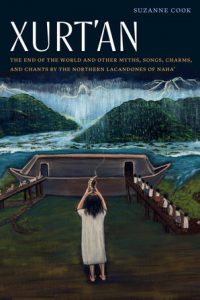 Xurt’an : The End of the World and Other Myths, Songs, Charms, and Chants by the Northern Lacandones of Naha’ Suzanne Cook (Series: Native Literatures of the Americas and Indigenous World Literatures)
Xurt’an : The End of the World and Other Myths, Songs, Charms, and Chants by the Northern Lacandones of Naha’ Suzanne Cook (Series: Native Literatures of the Americas and Indigenous World Literatures)
Xurt’an (the end of the world) showcases the rich storytelling traditions of the northern Lacandones of Naha’ through a collection of traditional narratives, songs, and ritual speech. Formerly isolated in the dense, tropical rainforest of Chiapas, Mexico, the Lacandon Maya constitute one of the smallest language groups in the world. Although their language remains active and alive, their traditional culture was abandoned after the death of their religious and civic leader in 1996. Lacking the traditional contexts in which the culture was transmitted, the oral traditions are quickly being forgotten.
This collection includes creation myths that describe the cycle of destruction and renewal of the world, the structure of the universe, the realms of the gods and their intercessions in the affairs of their mortals, and the journey of the souls after death. Other traditional stories are non-mythic and fictive accounts involving talking animals, supernatural beings, and malevolent beings that stalk and devour hapless victims. In addition to traditional narratives, Xurt’an presents many songs that are claimed to have been received from the Lord of Maize, magical charms that invoke the forces of the natural world, invocations to the gods to heal and protect, and work songs of Lacandon women, whose contribution to Lacandon culture has been hitherto overlooked by scholars. Women’s songs offer a rare glimpse into the other half of Lacandon society and the arduous distaff work that sustained the religion. The compilation concludes with descriptions of rainbows, the Milky Way as “the white road of Our Lord,” and an account of the solstices.
Transcribed and translated by a foremost linguist of the northern Lacandon language, the literary traditions of the Lacandones are finally accessible to English readers. The result is a masterful and authoritative collection of oral literature that will both entertain and provoke, while vividly testifying to the power of Lacandon Maya aesthetic expression.
**All synopses courtesy of University of Nebraska Press (https://www.nebraskapress.unl.edu/)
What’s Up Doc? New State Agency Publications at the Nebraska Library Commission

New state agency publications have been received at the Nebraska Library Commission for the 4th quarter of 2019. Included are reports from the Nebraska Department of Administrative Services, reports from Nebraska Colleges and Universities, Nebraska Commission on Law Enforcement and Criminal Justice, Nebraska’s Coordinating Commission for Postsecondary Education, Nebraska Broadband Initiative, and new books from the University of Nebraska Press, to name a few.
Most items, except the books from the University of Nebraska Press, are available for immediate viewing and printing by clicking on the highlighted link above, or directly in the .pdf below. You can read synopses of the books received from the University of Nebraska Press in the Book Briefs blogposts.
The Nebraska Legislature created the Nebraska Publications Clearinghouse in 1972, a service of the Nebraska Library Commission. Its purpose is to collect, preserve, and provide access to all public information published by Nebraska state agencies. By law (State Statutes 51-411 to 51-413) all Nebraska state agencies are required to submit their published documents to the Clearinghouse. For more information, visit the Nebraska Publications Clearinghouse page, contact Mary Sauers, Government Information Services Librarian; or contact Bonnie Henzel, State Documents Staff Assistant.
A History of the Census in the United States : Part 14
The Fourteenth Census: Census Day was January 1, 1920.

Authorizing Legislation
The date change for the 1920 census was requested by the Department of Agriculture. The department believed that in January, harvests would be completed and information about those harvests would still be fresh in farmers’ minds. Additionally, it argued that more people would be at home in January than in April.
The census act designated a three-year decennial census period, beginning July 1, 1919, during which time the Census Bureau was authorized to hire an increased work force at its Washington, DC headquarters and created a special field force to collect the data.
The act also authorized a census of manufactures to be taken in 1921, repeated every two years thereafter. Previously, the manufacturing census had been conducted every five years. The act further ordered a census of agriculture and livestock in 1925, repeated every ten years thereafter, and strengthened for penalties for those who refused to supply information or who supplied false information. These censuses, which had once been closely aligned with the decennial population count, were, by 1920, largely independent of each other.
The act also stipulated that the director could, at his discretion, furnish any governor or court with certified copies of census returns at the cost of making the search plus one dollar for certification. Individuals who wanted copies for genealogical or other purposes could also obtain them, so long as the information was not used to the detriment of the person to whom the information referred.
Enumeration
For the 1920 census, “usual place of abode” became the basis for enumeration. Individuals were enumerated as residents of the place in which they regularly slept, not where they worked or might be visiting. People with no regular residence, including “floaters” and members of transient railroad or construction camps, were enumerated as residents of the place where they were when the count was taken. Enumerators were also instructed to ask if any family members were temporarily absent; if so, these people were to be listed either with the household or on the last schedule for the census subdivision.
The format and information in the 1920 census schedules closely resembled that of the 1910 census. The 1920 census, however, did not ask about unemployment on the day of the census, nor did it ask about service in the Union or Confederate army or navy. Questions about the number of children born and how long a couple had been married were also omitted. The bureau modified the enumeration of inmates of institutions and dependent, defective, and delinquent classes. The 1920 census included four new questions: one asking the year of naturalization and three about mother tongue. There was no separate schedule for Indians in 1920.
Because of the changes in some international boundaries following World War I, enumerators were instructed to report the province (state or region) or city of persons declaring they or their parents had been born in Austria-Hungary, Germany, Russia, or Turkey. If a person had been born in any other foreign country, only the name of the country was to be entered.
The instructions to enumerators did not require that individuals spell out their names. Enumerators wrote down the information given to them; they were not authorized to request proof of age, date of arrival, or other information. The determination of race was based on the enumerator’s impressions.
Intercensal Activity
The results of the 1920 census revealed a major and continuing shift of the population of the United States from rural to urban areas. No apportionment was carried out following the 1920 census; representatives elected from rural districts worked to derail the process, fearful of losing political power to the cities. Reapportionment legislation was repeatedly delayed as rural interests tried to come up with mechanisms that would blunt the impact of the population shift. Congress finally passed a reapportionment bill in 1929. The bill declared that the House of Representatives would be apportioned based on the results of the 1930 census.
The 1929 act provided for an automatic reapportionment by the last method used unless Congress moved proactively to prevent that from occurring. The act also authorized the 1930 and subsequent decennial censuses.
Further Information
- A wide variety of historical statistics from this and other decades is available in Historical Statistics of the United States: Colonial Times to 1970. It is available as a PDF [74.4MB] or 2-part ZIP file: Part I [52.2MB] | Part II [66.1MB].
- Reports and statistics from the 1920 Census
Information provided from Census.gov
Posted in Books & Reading, Census, Education & Training, General, Information Resources, What's Up Doc / Govdocs
Tagged census
Leave a comment
A History of the Census in the United States : Part 13
The Thirteenth Census: Census Day was April 15, 1910.
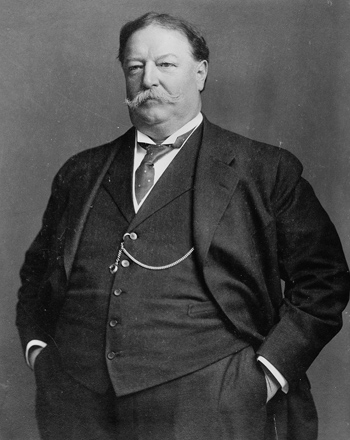
Authorizing Legislation
Legislation for the 1910 census was introduced initially in December 1907, but was not enacted into law until July 1909. The delay resulted from a disagreement over the appointment of enumerators, with President Theodore Roosevelt insisting that they be hired through the civil service system and Congress seeking to retain them as patronage positions, as had been traditional. Roosevelt won this fight.
One new feature of the 1910 act was that it changed Census Day from June 1st, which it had been since 1830, to April 15. The director of the Census Bureau suggested this adjustment, because he felt that much of the urban population would be absent from their homes on summer vacations in June.
The act also did away with vital statistics inquiries on the questionnaire, but added questions about mines and quarries. A month before the census, an amendment to the act required an additional question on nationality or mother tongue of foreign-born persons and their parents. Because the questionnaires had already been printed, enumerators were instructed to add this information to column 12 (birthplace) of the form.
The enabling legislation for the 1910 census authorized funds for the newly established permanent Census Bureau to expand its permanent workforce and specifically created several new full-time positions, including that of a geographer, a chief statistician, and an assistant director. The assistant director, appointed by the president with the advice and consent of the Senate, was to be an experienced practical statistician. All non-presidentially-appointed census employees were hired on the basis of their scores in open, competitive examinations, administered throughout the country by the Civil Service Commission.
Enumeration
For the first time, enumerators in the large cities distributed questionnaires in advance, a day or two prior to April 15, so that people could become familiar with the questions and have time to prepare their answers. In practice, only a small portion of the population filled out their questionnaires before the enumerator visit, however. The law gave census takers two weeks to complete their work in cities of 5,000 inhabitants or more while enumerators in smaller and rural areas were allotted 30 days to complete their task.
Crises and Controversies
Difficulties with the tabulation process continued despite the presence of automatic counting machinery introduced in the most recent censuses. Correcting these problems delayed publication of some population numbers. Some census results, such as the total population of cities, were issued first as brief press releases, but were expanded into bulletins and abstracts that appeared as long as a year before the final reports were published.
Intercensal Activity
When the United States entered World War I in 1917, the Census Bureau took on an important new role. During the nation’s mobilization for the war, the Census Bureau was able to use its compiled population and economic data to report on populations of draft-age men, along with the different states’ industrial capacities.
Further Information
- A wide variety of historical statistics from this and other decades is available in Historical Statistics of the United States: Colonial Times to 1970. It is available as a PDF [74.4MB] or 2-part ZIP file: Part I [52.2MB] | Part II [66.1MB].
- Reports and statistics from the 1910 Census
Information provided from Census.gov
Posted in Books & Reading, Census, Education & Training, General, Information Resources, What's Up Doc / Govdocs
Tagged census
Leave a comment
A History of the Census in the United States : Part 12
The Twelfth Census: Census Day was June 1, 1900.
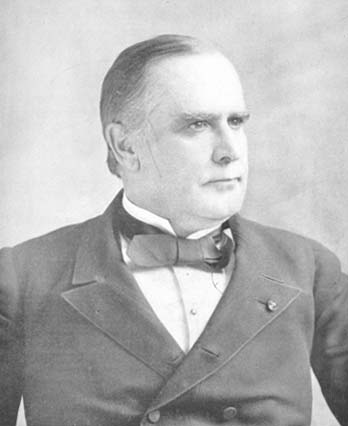
Authorizing Legislation
In the act authorizing the 1900 census, Congress limited census content to questions dealing with population, mortality, agriculture, and manufacturing. Reports on these topics, called “Census Reports,” were to be published by June 30, 1902. The act also authorized special census agents to collect statistics relating to incidents of deafness, blindness, insanity, juvenile delinquency, and the like; as well as on religious bodies; utilities; mining; and transportation, among others. These statistics were to be collected following the completion of the regular census. The preparation of the special reports developed from these statistics was to be accomplished in such a way so as to not interfere with the completion of the Census Reports.
The act also changed the title of the chief officer of the Census Office from “supervising clerk of the census” to “director of the census.” Additionally, a new position, assistant director of the census, to be filled by “an experienced practical statistician,” was established. The director was given the power to appoint staff based on noncompetitive examinations. However, in practice, positions were given to political referrals.
Enumeration
The Departments of War and the Navy enumerated military personnel (including those who were abroad). Indian Territory was enumerated with the cooperation of the commissioner of Indian affairs.
Hawaii, which had been annexed in 1898, was included in the census for the first time. (A census of Puerto Rico and Cuba had been carried out by the War Department in 1899. Under the direction of the Philippine Commission, a census of that territory was taken in 1903.)
Intercensal Activity
In 1902, the formerly temporary Census Office was made a permanent organization within the Department of the Interior. In 1903, it became the Census Bureau and was moved to the new Department of Commerce and Labor.
The transition from a temporary to a permanent agency was sometimes controversial. One of Congress’s goals in creating the new department was to centralize many of the overlapping statistical offices scattered throughout the bureaucracy; Census Bureau officials attempted, without much early success, to assume the role as chief statistical agency of the federal government. These aspirations were hindered, in part, by the Census Bureau’s subordinate position within the Department of Commerce and Labor.
Further Information
- A wide variety of historical statistics from this and other decades is available in Historical Statistics of the United States: Colonial Times to 1970. It is available as a PDF [74.4MB] or 2-part ZIP file: Part I [52.2MB] | Part II [66.1MB].
- Reports and statistics from the 1880 Census
- History and Growth of the United States Census: 1790-1890 [PDF 117MB], by Carroll D. Wright and William C. Hunt.
Information provided from Census.gov
Posted in Books & Reading, Census, Education & Training, General, Information Resources, What's Up Doc / Govdocs
Tagged census
Leave a comment
A History of the Census in the United States : Part 11
The Eleventh Census: Census Day was June 2, 1890.
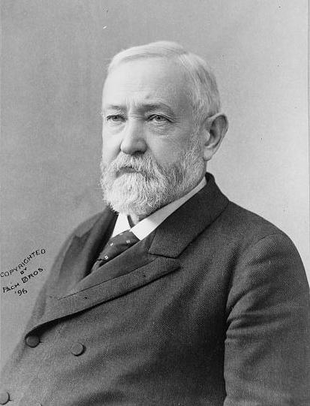
Authorizing Legislation
An act signed into law March 1, 1889 authorized the census of 1890, which was modeled after the 1880 enumeration.
Enumeration
Because June 1 was a Sunday, the 1890 enumeration began on June 2. The census employed 175 supervisors, with one or more appointed to each state or territory, except Alaska and the Indian Territory. Subdivisions assigned to a single enumerator were not to exceed 4,000 inhabitants. In cities designated by 1880 census results to have populations under 10,000, the enumeration was to be completed within two weeks. Enumerators were required to collect all information required by the act by a personal visit to each dwelling and family.
The 1890 questionnaire retained almost all of the inquiries from the 1880 census, and a few new questions were added. The 1890 census included a greater number of subjects than any previous census and more than would be included in those immediately following. New entries included questions about ownership and indebtedness of farms and homes; the names, as well as units served in, length of service and residences of surviving Union soldiers and sailors and the names of the widows of those who had died. Another new question dealt with race, including “Japanese” as a category for the first time, along with “Chinese,” “Negro,” “mulatto,” “quadroon,” “octoroon,” and “white.”
The population schedule was changed so that a separate sheet was used for each family, irrespective of the number of persons included.
As in 1880, experts and special agents were hired to make special enumerations of manufactures, Indians living within the jurisdiction of the United States, and a separate enumeration of Alaska. Furthermore, the schedule collecting social statistics was withdrawn from enumerators; the work of obtaining statistics concerning mines and mining, fisheries, churches, education, insurance, transportation, and wealth, debt, and taxation, also was conducted by experts and special agents.
For the first time, enumerators were given detailed maps to follow so they could account for every street or road and not stray beyond their assigned boundaries.
Technological Advancement
The 1890 census was notable as the first in which the electric tabulating system, invented by former Census Office employee Herman Hollerith, was used. Tabulation of the 1880 census results took almost a decade to complete, and officials hoped Hollerith’s machine would alleviate delays caused by relying on hand counts and rudimentary tallying machines to process data.
Hollerith’s machine required information from the census questionnaires to be transferred to a card, which was hole-punched at various places to indicate the characteristics – age, sex, color, marital status, etc. – of a person enumerated. The cards were then run through an electronic tabulating machine, which, using metal pins to complete circuits through the punched holes, counted or cross-tabulated different characteristics.
Intercensal Activity
Robert P. Porter served as superintendent of census until his resignation on July 31, 1893. On October 3, 1893, Congress enacted a law that directed census-related work to continue under the direction of the commissioner of labor. On March 2, 1895, a further act of Congress closed the Census Office and transferred the unfinished work to the office of the secretary of the interior, where it continued until July 1, 1897.
Further Information
- A wide variety of historical statistics from this and other decades is available in Historical Statistics of the United States: Colonial Times to 1970. It is available as a PDF [74.4MB] or 2-part ZIP file: Part I [52.2MB] | Part II [66.1MB].
- Reports and statistics from the 1880 Census
- History and Growth of the United States Census: 1790-1890 [PDF 117MB], by Carroll D. Wright and William C. Hunt.
Information provided from Census.gov
Posted in Books & Reading, Census, Education & Training, General, Information Resources, What's Up Doc / Govdocs
Tagged census
Leave a comment
Friday Reads: Nebraska During the New Deal–The Federal Writers’ Project in the Cornhusker State by Marilyn Irvin Holt

I don’t generally read a lot of non-fiction, but occasionally I come across a title that really catches my Nebraska history eye: Nebraska During the New Deal : the Federal Writers Project in the Cornhusker State. And for those not already familiar with the writing of Marilyn Irvin Holt (The Orphan Trains, Children Of the Western Plains, and others), her meticulous research and insightful writing never disappoints. I highly recommend her newest title as another excellent example of the history of Nebraska and the Nebraska spirit.
As a New Deal program, the Federal Writers’ Project (FWP) aimed to put unemployed writers, teachers, and librarians to work. The contributors were to collect information, write essays, conduct interviews, and edit material with the goal of producing guidebooks in each of the then forty-eight states and U.S. territories. Project administrators hoped that these guides, known as the American Guide Series, would promote a national appreciation for America’s history, culture, and diversity and preserve democracy at a time when militarism was on the rise and parts of the world were dominated by fascism.
Marilyn Irvin Holt focuses on the Nebraska project, which was one of the most prolific branches of the national program. Best remembered for its state guide and series of folklore and pioneer pamphlets, the project also produced town guides, published a volume on African Americans in Nebraska, and created an ethnic study of Italians in Omaha. In Nebraska during the New Deal Holt examines Nebraska’s contribution to the project, both in terms of its place within the national FWP as well as its operation in comparison to other state projects. (University of Nebraska Press)
A History of the Census in the United States : Part 10
The Tenth Census: Census Day was June 1, 1880.

Authorizing Legislation
The act authorizing the 1880 census gave supervision of the enumeration to a body of officers, known as supervisors of the census, who were specifically chosen for work on the census. The superintendent of the census and all supervisors were to be presidential appointees, subject to Senate confirmation. The terms of both were to expire when the census results were compiled and published.
Enumeration
Each supervisor was responsible for recommending the organization of his district for enumeration, choosing enumerators for the district and supervising their work, reviewing and transmitting the returns from the enumerators to the central census office, and overseeing the compensation for enumerators in each district.
The census act required each enumerator “to visit personally each dwelling house in his sub-division, and each family therein, and each individual living out of a family in any place of abode, and by inquiry made of the head of such family, or of the member there of deemed most credible and worthy of trust, or of such individual living out of a family, to obtain each and every item of information and all the particulars.” In case no one was available at a family’s usual place of abode, the enumerator was directed by the law “to obtain the required information, as nearly as may be practicable, from the family or families, or person or persons, living nearest to such place of abode.”
The census act also provided for the collection of detailed data on the condition and operation of railroad corporations, incorporated express companies, and telegraph companies, and of life, fire, and marine insurance companies (using Schedule No.4 – Social Statistics). Fines were to be imposed on officials of “every corporation…who shall…willfully neglect or refuse to give true and complete answers to any inquiries authorized by this act.”
In addition, the superintendent of census was required to collect and publish statistics of the population, industries, and resources of Alaska, with as much detail as was practical. An enumeration was also made of all untaxed Indians within the jurisdiction of the United States.
The 1880 decennial census was taken on five schedules: “Population,” “Mortality,” “Agriculture,” “Social Statistics,” and “Manufacturing.”
Further Information
- A wide variety of historical statistics from this and other decades is available in Historical Statistics of the United States: Colonial Times to 1970. It is available as a PDF [74.4MB] or 2-part ZIP file: Part I [52.2MB] | Part II [66.1MB].
- Reports and statistics from the 1880 Census
- History and Growth of the United States Census: 1790-1890 [PDF 117MB], by Carroll D. Wright and William C. Hunt.
Information provided from Census.gov
Posted in Books & Reading, Census, Education & Training, General, Information Resources, What's Up Doc / Govdocs
Tagged census
Leave a comment
A History of the Census in the United States : Part 9
The Ninth Census: Census Day was June 1, 1870.
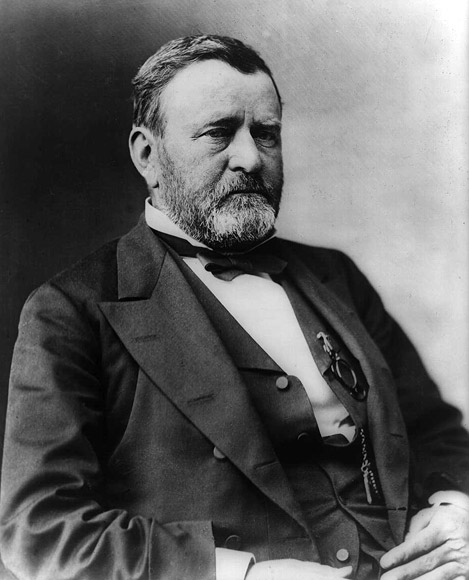
Authorizing Legislation
The 1870 Census was conducted under the authority of the Census Act of 1850. A new law, approved on May 6, 1870, called for two procedural changes: The marshals were to submit the returns from the population questionnaire to the Census Office by September 10, 1870; all other questionnaires were due by October 1, 1870. Additionally, penalties for refusing to reply to enumerator inquiries were expanded to cover all questions asked on all questionnaires.
Enumeration
The Census Office, and the position of superintending clerk were abolished in May 1865. A portion of the clerks engaged in census work transferred to the General Land Office, where work of the 1860 census was completed under the direction of the commissioner of the General Land Office
After the Civil War, the decennial census questionnaires were reordered and redesigned to account for end of the “slave questionnaire.” The schedules for the 1870 census were: “General Population,” “Mortality,” “Agriculture,” “Products of Industry,” and “Social Statistics.”
The secretary of interior selected General Francis A. Walker as superintendent of the ninth census on February 7, 1870. At the time of his appointment General Walker was chief of the Bureau of Statistics – an agency within the Treasury Department – and was one of several experts who had participated in the U.S. House of Representatives’ committee deliberations on the 1870 census. A capable administrator, Walker introduced examinations to test the qualifications of those applying for positions with the Census Office. Walker remained as superintendent until November 1871, when Congress’s failure to appropriate funds for his salary caused him to resign. Nevertheless, he continued overseeing census work as commissioner of Indian Affairs. Later, he resumed his duties as superintendent of the census, working without compensation.
The 1870 enumeration was completed by August 23, 1871.
Technological Advancement
By 1870, the job of tallying and tabulating questionnaire responses was becoming overly burdensome for the Census Office. This problem was partially alleviated with the use of a rudimentary tallying machine, invented by the chief clerk of the Census Office, and later superintendent, Charles W. Seaton.
Further Information
- A wide variety of historical statistics from this and other decades is available in Historical Statistics of the United States: Colonial Times to 1970. It is available as a PDF [74.4MB] or 2-part ZIP file: Part I [52.2MB] | Part II [66.1MB].
- Reports and statistics from the 1850 census.
- History and Growth of the United States Census: 1790-1890 [PDF 117MB], by Carroll D. Wright and William C. Hunt.
Information provided from Census.gov
Posted in Books & Reading, Census, Education & Training, General, Information Resources, What's Up Doc / Govdocs
Tagged census
Leave a comment
A History of the Census in the United States : Part 8
The Eighth Census: Census Day was June 1, 1860.
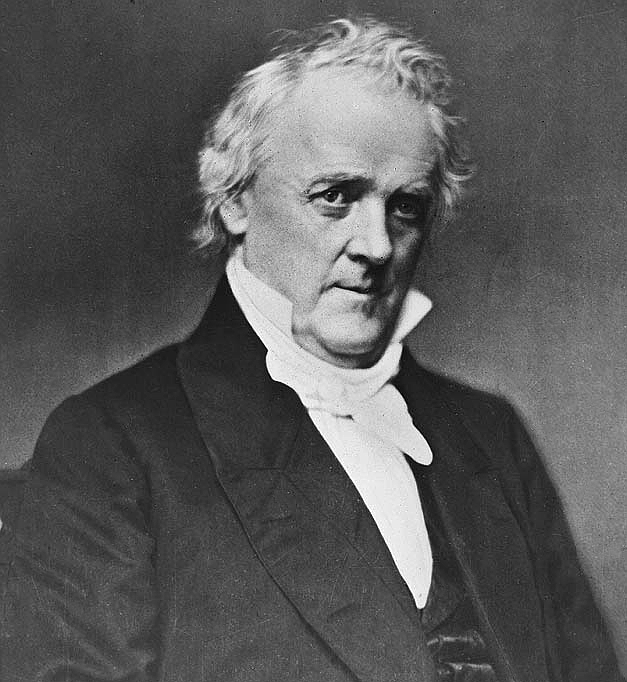
Authorizing Legislation
The 1850 Census Act was the authorizing legislation for the 1860 census. That act had stipulated that, according to the recommendation of the secretary of the interior, its provisions were to be adhered to for all future decennial censuses if no new authorizing legislation was passed by January 1 of the year in which the census was required.
Intercensal Activity
The Census Office, and the position of superintending clerk were abolished in May 1865. A portion of the clerks engaged in census work transferred to the General Land Office, where work of the 1860 census was completed under the direction of the commissioner of the General Land Office
Further Information
- A wide variety of historical statistics from this and other decades is available in Historical Statistics of the United States: Colonial Times to 1970. It is available as a PDF [74.4MB] or 2-part ZIP file: Part I [52.2MB] | Part II [66.1MB].
- Reports and statistics from the 1850 census.
- History and Growth of the United States Census: 1790-1890 [PDF 117MB], by Carroll D. Wright and William C. Hunt.
Information provided from Census.gov
Posted in Books & Reading, Census, Education & Training, General, Information Resources, What's Up Doc / Govdocs
Tagged census
Leave a comment
A History of the Census in the United States : Part 7
The Seventh Census: Census Day was June 1, 1850.

Authorizing Legislation
The Census Act of 1840 (signed into law on March 3, 1839 and amended by an act of February 26, 1840) authorized establishing a centralized census office during each enumeration. Congress left the design of the questionnaire to the discretion of the secretary of state, but specified that inquiries be made of each household. Subjects among the inquiries were to include “the pursuits, industry, education, and resources of the country.” New population inquiries included questions about school attendance, literacy, and vocation. In March 1849, Congress enacted a bill establishing a census board whose membership consisted of the secretary of state, the attorney general, and the postmaster general. The law authorized this board to prepare and cause to be printed such forms and schedules as may be necessary for the full enumeration of the inhabitants of the United States; it also authorized the board to prepare forms and schedules for collecting information on mines, agriculture, commerce, manufactures, education, and other topics, as well as “exhibit a full view of the pursuits, industry, education, and resources of the country.”
The seventh census was governed by the provisions of an act of May 23, 1850 that directed that six schedules be used to collect the information requested by the Congress. The act directed enumerators to return their results to the secretary of the interior by November 1, 1850.
Enumeration
The number of population inquiries grew in the 1850 census. Every free person’s name was to be listed, not just the head of the household. The marshals also collected additional “social statistics,” including information on taxes, schools, crime, wages, value of the estate, etc. and data on mortality.
Each marshal was also responsible for subdividing his district into “known civil divisions,” such as counties, townships, or wards, and ensuring that his assistants’ returns were completed properly.
Further Information
- A wide variety of historical statistics from this and other decades is available in Historical Statistics of the United States: Colonial Times to 1970. It is available as a PDF [74.4MB] or 2-part ZIP file: Part I [52.2MB] | Part II [66.1MB].
- Reports and statistics from the 1850 census.
- History and Growth of the United States Census: 1790-1890 [PDF 117MB], by Carroll D. Wright and William C. Hunt.
Information provided from Census.gov
Posted in Books & Reading, Census, Education & Training, General, Information Resources, What's Up Doc / Govdocs
Tagged census
Leave a comment
A History of the Census in the United States : Part 6
The Sixth Census: Census Day was June 1, 1840.
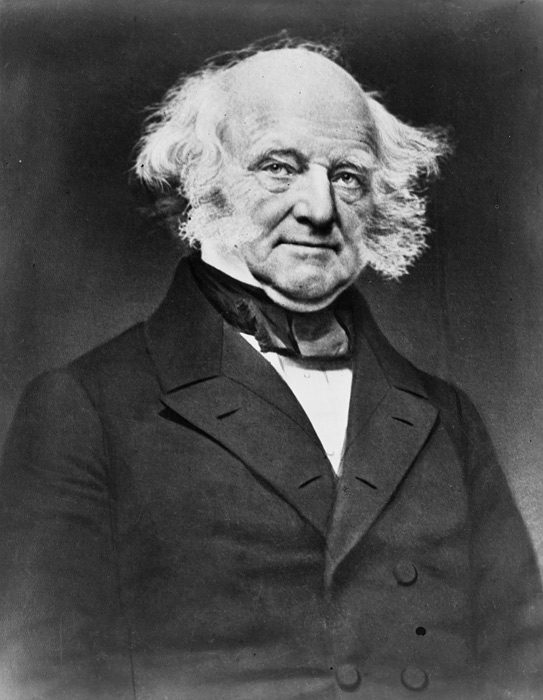
Authorizing Legislation
The Census Act of 1840 (signed into law on March 3, 1839 and amended by an act of February 26, 1840) authorized establishing a centralized census office during each enumeration. Congress left the design of the questionnaire to the discretion of the secretary of state, but specified that inquiries be made of each household. Subjects among the inquiries were to include “the pursuits, industry, education, and resources of the country.” New population inquiries included questions about school attendance, literacy, and vocation.
Enumeration
The administration of the sixth census was very similar to that of the fifth. Enumeration began on June 1, 1840. Marshals were to receive two copies of the census receipts from enumerators by November 1, 1840, one of which was to be sent to the secretary of state by December 1, 1840.
Further Information
- A wide variety of historical statistics from this and other decades is available in Historical Statistics of the United States: Colonial Times to 1970. It is available as a PDF [74.4MB] or 2-part ZIP file: Part I [52.2MB] | Part II [66.1MB].
- Reports and statistics from the 1840 census.
- History and Growth of the United States Census: 1790-1890 [PDF 117MB], by Carroll D. Wright and William C. Hunt.
Information provided from Census.gov
Posted in Books & Reading, Census, Education & Training, General, Information Resources, What's Up Doc / Govdocs
Tagged census
Leave a comment
A History of the Census in the United States: Part 5
The Fifth Census: Census Day was June 1, 1830.
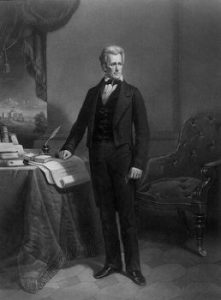
on Census Day, June 1, 1830.
Authorizing Legislation
President John Q. Adams, in his fourth address to the U.S. Congress on December 28, 1828, recommended starting the census earlier in the year than August 1. He also proposed that the collection of age data be extended from infancy, in intervals of 10 years, “to the utmost boundaries of life.” These changes were incorporated into the census act of March 23, 1830.
Enumeration
As in the previous census, marshals or their assistants visited every dwelling house for enumeration, or, as the law stated, made a personal inquiry of the head of every family in their district. Because of delays in the compilation of the census returns, the filing date was extended to August 1, 1831.
In 1830, enumerators used uniform printed schedules for the first time. In prior censuses, marshals had used whatever paper was available and had designed and bound the sheets themselves. Because federal census clerks did not have to sort through a huge variety of schedules in 1830, they were able to tabulate census results more efficiently.
The 1830 census counted the population only. After the failures of the past two censuses, no attempt was made to collect additional data on manufacturing and industry in the United States.
Further Information
- A wide variety of historical statistics from this and other decades is available in Historical Statistics of the United States: Colonial Times to 1970. It is available as a PDF [74.4MB] or 2-part ZIP file: Part I [52.2MB] | Part II [66.1MB].
- Reports and statistics from the 1830 census.
- History and Growth of the United States Census: 1790-1890 [PDF 117MB], by Carroll D. Wright and William C. Hunt.
Information provided from Census.gov


